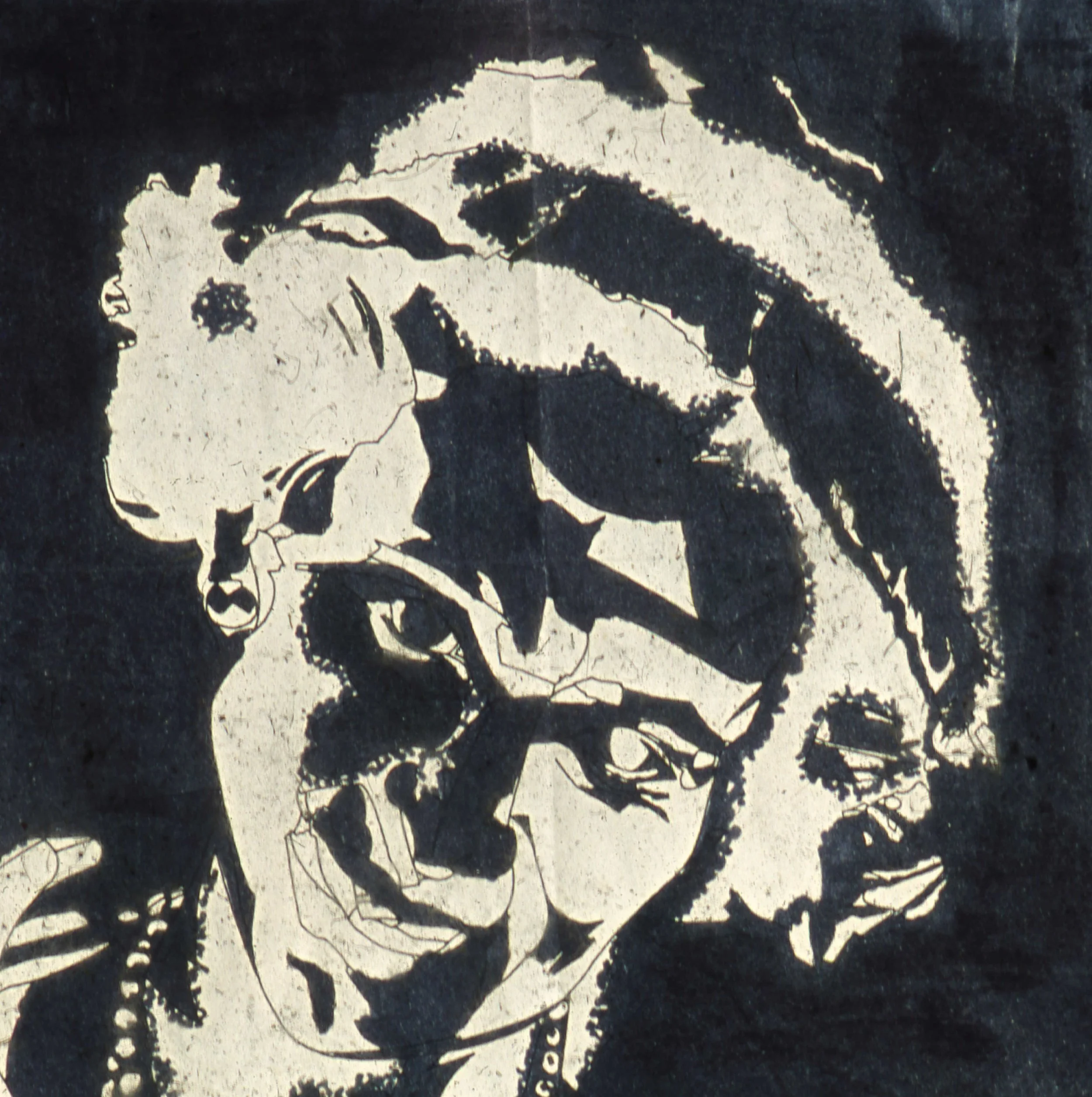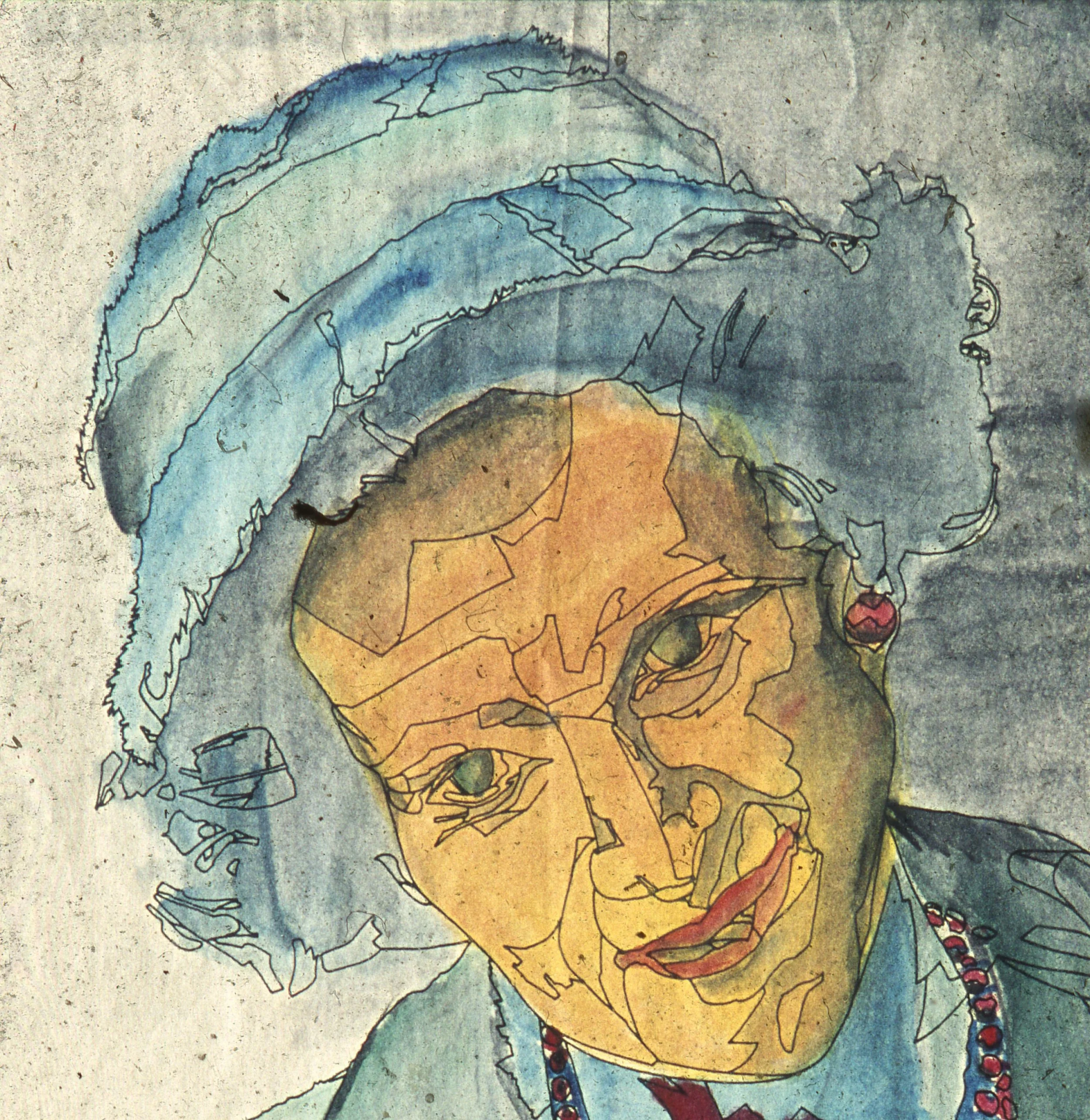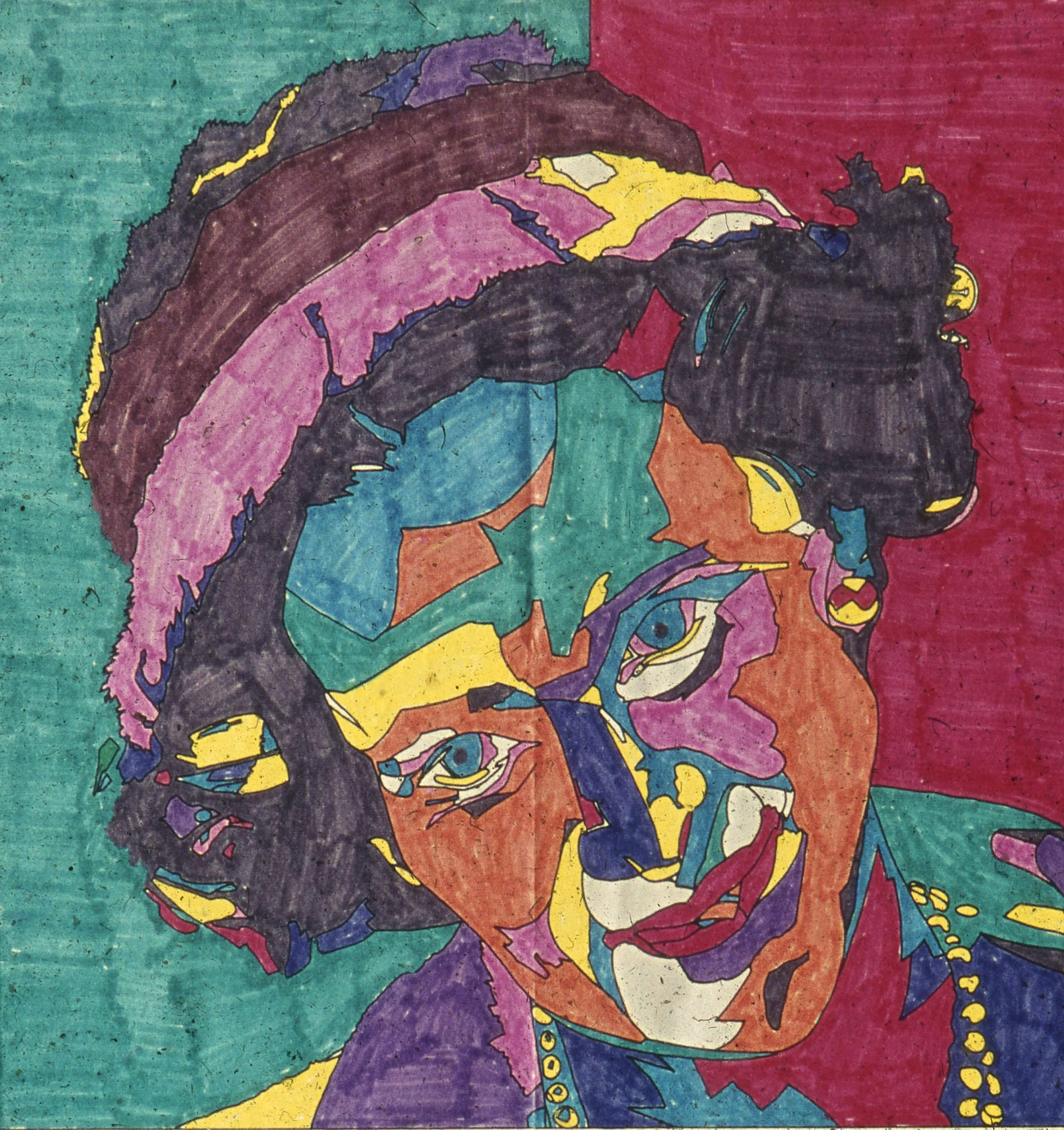The Fabiola-project
"This project by Roland Van den Berghe dates from a time when democratization trends gave art a significant impulse: 1969-1973. Central to it is the phenomenon of unilateral exercise of power and manipulation through state apparatuses. Initially, this was made visible by the artist and thus potentially reversed for those subjected to it. State apparatuses can be understood as those institutions used by the state to sustain itself and anchor the basis of its power. Religion, education, but also the monarchy and sports are examples. Systems that channel emotions and capabilities for the benefit of consolidating societal structures and existing power relations. The artist's intervention consisted of presenting symbols of selected state apparatuses, the queen and the cyclist, to 'the people' for manipulation in the form of coloring pages. The roles were reversed. Power dynamics were revealed. This occurred in three phases. In Brussels, seven portraits of Fabiola, created by the artist, were presented for coloring to well-known Belgians, both left- and right-wing, including Ernest Mandel, who wrote a statement over his, writer Marcel Van Maele, and cartoonist Gal, who turned some portraits to face the wall and made amusing collages with others. Next, a coloring page was distributed through the magazines Humo and Spécial, and via Openbaar Kunstbezit, to a broader and politically more diverse audience.
Invitation Zeven Blauwdrukken van een Stemspleet, Steendrukkerij de Jong en Co, Hilversum, 1970. Archive of Toni Geirlandt.
Two people who responded via Openbaar Kunstbezit were visited by the artist with their consent, where he photographed them with their drawing next to their television. Roland Van den Berghe used this opportunity to bring another immense power apparatus—armament—into the living room more tangibly than television could, through an inflatable rocket. This marked the third phase, which simultaneously closed another loop. First, he had the public participate in his domain, art. Then, he entered their private sphere; the living room of the laborer who toils to support the queen who governs him. Living rooms with TVs, windows to the world. Something dangerous and threatening from it became overwhelmingly concrete. The rocket grew rapidly, shooting into all corners of the room, breaking cups. Van den Berghe placed an art object, a dual symbol of power, in the immediate environment of the participants. He took control of his domain and democratized his instruments. An important aspect of this action was also the network created by the artist, which encompassed art production and reception outside the official circuit. A system in which different kinds of people were actively involved in art through the artist's actions. The artist retained control. He structured participation step by step and determined the final form of the presentation, which in turn added meaning to the whole."
Translated from the Dutch text: 1983, Invitation to the Exhibition at Kunstcentrum de Gele Rijder, by Ans van Berkum. Archive Roland Van den Berghe.
Colored Merckx/Fabiola drawing, published in The Fool, 1986.
Timeline
1970
Solo Exhibition Seven Blueprints of a Glottis, The Gallery Club, Knokke.
1970
Solo Exhibition Four Works, Pogo Gallery, Brussels.
1970
Publication of Glottis, a 'coloring picture book', published in Brussels/Amsterdam by publisher E. Christiaens. Limited edition of 75 signed copies. Part of the assemblage Seven Blueprints of a Glottis.
1971
Solo Exhibition Seven Blueprints of a Glottis at Steendrukkerij de Jong & Co, Hilversum.
1971
Publication of Fabiola drawing in Humo on March 25 (resulting in 800 responses).
1972
Publication of Merckx drawing in Le Spécial on June 12 (resulting in 72 responses).
1972
Publication of Merckx drawing in Gazet van Antwerpen on March 17, one day before the opening of Roland's solo exhibition at the Royal Museum of Fine Arts Antwerp. Visitors who brought a colored-in version received free admission.
1972
Solo Exhibition Outlaw and Function, Royal Museum of Fine Arts Antwerp. Included were the Fabiola drawings colored by artists Galle, Ernest Mandel, Fred Van Hove, Marcel Van Maele, Jo Dekmine, and Gal.
1973
Publication of Merckx and Fabiola drawings in the Journal of Public Art Ownership, March/June 1973 (resulting in two responses). This publication only appeared in the Dutch edition, including an invitation for participants to invite the artist to their home after completing the drawing. During the visit, the artist was photographed with their colored drawing, and Van den Berghe installed an inflatable rocket in their living room. This aspect led to the project often being referred to as Queen-Missile.
1983
Exhibition Queen-Missile, Kunstcentrum de Gele Rijder, Arnhem. This exhibition included a photographic report of the Queen-Missile project.
2007
During the 2007 federal election campaign, the Belgian newspaper De Standaard published line drawings resembling Guy Verhofstadt, Yves Leterme, and Johan Van de Lanotte. Van den Berghe saw a strong resemblance to his earlier Fabiola and Merckx drawings, which led to the exhibition Aide-Mémoire at Frank JMA Castelyns.
2007
Solo Exhibition Aide-Mémoire at Frank JMA Castelyns. Featured were original Fabiola drawings, those colored by artists and readers, and new works inspired by the drawings in De Standaard.
2012
Group Exhibition Cross-Examinations: These and Other Words, Extra City Antwerp. A selection from the Fabiola Project was displayed.
Publication Merckx/Fabiola drawing in Openbaar Kunstbezit Nederland, volume 17, number 2, April–June 1973.

















